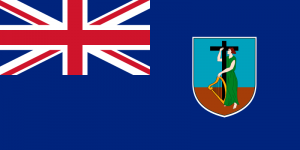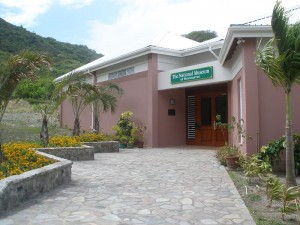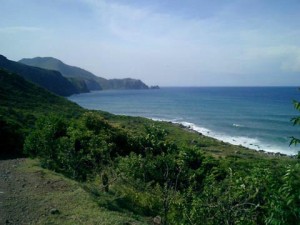Montserrat

The Rebirth of Montserrat: Part 1
Montserrat, the Emerald Isle of the Caribbean, is back in business after volcanic destruction in the 1990’s. Future History Films presents two parts of the documentary directed by Craig Leon.
Montserrat /mɒntsəˈræt/ is a British Overseas Territory located in theCaribbean. The island is located in the Leeward Islands, part of the chain of islands known as the Lesser Antilles, in the West Indies. Montserrat measures approximately 16 km (9.9 mi) long and 11 km (6.8 mi) wide, with approximately 40 kilometres (25 mi) of coastline. Montserrat is nicknamedThe Emerald Isle of the Caribbean both for its resemblance to coastal Ireland and for the Irish ancestry of some of its inhabitants.
On 18 July 1995, the previously dormant Soufrière Hills volcano, in the southern part of the island, became active. Eruptions destroyed Montserrat’s Georgian era capital city of Plymouth and two-thirds of the island’s population was forced to flee. The volcanic activity continues, currently mostly affecting the vicinity of Plymouth, including its docking facilities, and the eastern side of the island around the former W. H. Bramble Airport, the remnants of which were buried by flows from volcanic activity on 11 February 2010.
An “exclusion zone” extending from the south coast of the island north to parts of the Belham Valley has been imposed because of the size of the existing volcanic dome and the resulting potential for pyroclastic activity. Visitors are generally not permitted entry into the exclusion zone, but an impressive view of the destruction of Plymouth can be seen from the top of Garibaldi Hill in Isles Bay. Relatively quiet since early 2010, the volcano continues to be closely monitored by the Montserrat Volcano Observatory.
A new town and port is currently being developed at Little Bay, which is on the northwest coast of the island. While this construction proceeds, the centre of government and businesses rests at Brades.
History
Archaeological field work in 2012 in Montserrat’s Centre Hills indicated there was an Archaic (pre-Arawak) occupation between 4000 and 2500 BP. Later coastal sites show the presence of the Saladoid culture. In November 1493 Christopher Columbus passed Montserrat in his second voyage, after being told that the island was unoccupied due to raids by the Caribs. Columbus named the island Santa María de Montserrat, after the Monastery of Montserrat in the Crown of Aragon (today a part of Spain). The island came under English control in 1632 when anti-Catholic violence in Nevis forced a group of Irish transported from Ireland as slaves, to settle in Montserrat. A neo-feudal colony developed.
The colonists began to import African slaves for labour, as was common to most Caribbean islands. The settlers built an economy based on the production of sugar, rum, arrowroot and Sea Island Cotton, cultivated on large plantations manned by slave labor. By the late 1700’s, numerous plantations had been developed on the island. Many Irish people were also transported to the island, to work as slaves, indentured servants or exiled prisoners; some were exiled by Oliver Cromwell. The victims of Cromwellian transportation ranged from political and military prisoners to anyone who might burden the public purse: orphans, widows and the unemployed.
18th century
On 17 March 1768, slaves rebelled but failed to achieve freedom. The people of Montserrat celebrate St Patrick’s Day as a public holiday due to the slave revolt. Festivities held that week commemorate the culture of Montserrat in song, dance, food and traditional costumes.
In 1782, during the American Revolutionary War, France briefly captured Montserrat after supporting the American rebels. The French returned the island to Great Britain under the 1783 Treaty of Paris which ended that conflict.
New Crops and Politics
Britain abolished slavery in Montserrat and its other Caribbean territories effective August 1834.
During the nineteenth century, falling sugar-prices had an adverse effect on the island’s economy, as Brazil and other nations competed in the trade.
In 1857, the British philanthropist Joseph Sturge bought a sugar estate to prove it was economically viable to employ paid labour rather than slaves. Numerous members of the Sturge family bought additional land. In 1869 the family established the Montserrat Company Limited and planted lime trees, started the commercial production of lime juice, set up a school, and sold parcels of land to the inhabitants of the island. Much of Montserrat came to be owned by smallholders.
From 1871 to 1958, Montserrat was administered as part of the federal crown colony of the British Leeward Islands, becoming a province of the short-lived West Indies Federation from 1958 to 1962.
In 1979, The Beatles producer George Martin’s AIR Studios Montserrat opened. The island attracted world-famous musicians, who came to record in the peaceful and lush tropical surroundings of Montserrat. The last decade of the twentieth century, however, brought two events which devastated the island.
In the early hours of 17 September 1989, Hurricane Hugo, a Category 4 storm, struck Montserrat with full force, producing sustained winds of 140 miles per hour. It damaged more than 90 percent of the structures on the island. AIR Studios closed, and the tourist economy was virtually wiped out. Within a few years, the island had recovered considerably, only to be damaged again, 6 years later by volcanic activity which started in 1995.
Geography
The island of Montserrat is located approximately 480 km (300 mi) east-southeast of Puerto Rico and 48 km (30 mi) southwest of Antigua. It comprises 104 km2 (40 sq mi) but is currently gradually increasing in size owing to the buildup of volcanic deposits on the southeast coast. The island is 16 km (9.9 mi) long and 11 km (6.8 mi) wide, with rock cliffs rising 15 to 30 m (50–100 feet) above the sea and a number of smooth bottomed sandy beaches scattered among coves on the western (Caribbean) side of the island.
Montserrat has two islets, Little Redonda and Virgin, and Statue Rock.




